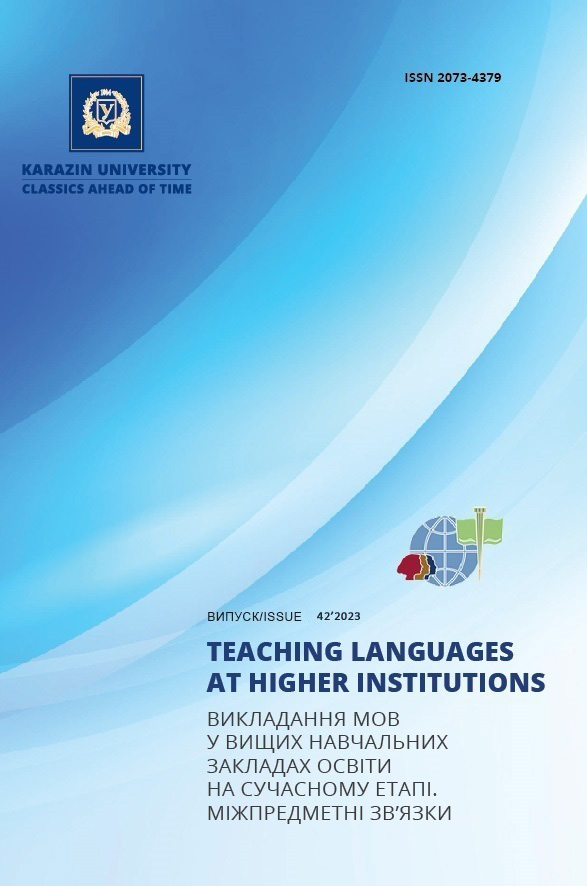Pedagogical grammar as the framework of TEFL research. Part 14. Age and foreign language acquisition: experimental data
Abstract
The paper presents a comparative analysis of various groups of data (language acquisition speed, quality of language acquisition, comparative acquisition efficiency depending on the period of exposure, adult-child, and younger-children versus older-childrenʼs differences in acquisition) obtained in different experiments over a substantial time span. As it follows from the experimental studies analysis, there is conflicting data regarding the existence of a “critical age” for the foreign language acquisition and its specific limits. Much of the data can be interpreted in various ways. Differences between adults and children, older children and younger children can be explained not only by the existence of the “critical age”, but also by other reasons. The advantage of older students may be explained by their better memory, which allows them to learn a large number of clichés with which they successfully communicate, even having a very limited supply of language material. In general, basing on the available data, it is hardly possible to state that there is any age boundary in human life beyond which the foreign language acquisition is impossible or difficult to any serious degree. Experimental data, while contradictory, do not give rise to a straightforward conclusion about the advantage of any age group in any aspect of language. In short-time courses, adults progress faster but on longer stretches, children close the gap and even outpace adults. There are quite a few differences in language acquisition between adults and children, as well as older and younger children, but these differences are probably not due to the existence of a “critical age”, but to other factors discussed in the paper. It is likely that adults can learn language just as effectively as children provided the factors that impede their learning (strong instrumental and integrative motivation, absence of unfavorable affective factors, etc.) are eliminated. However, this assumption requires further research.
Downloads
References
Chernovaty, L. (1999). Osnovy teorii pedagogicheskoi grammatiki inostrannogo yazyka [The Basics of the Foreign Language Pedagogical Grammar Theory]. Doctor of Sciences thesis extended abstract. Kharkiv: V.N. Karazin Kharkiv National University [in Ukrainian].
Asher, J., Price, B. (1982). The learning strategy of the Total Physical Response: some age differences. Child-Adult Differences in Second Language Acquisition. Krashen, S., Scarcella, S., Long, M. (Еds.). Rowley: Newbury House, pp. 76–83.
Chernovaty, L. (2016-2022). Pedagogical grammar as the framework of TEFL research. Parts 1-14. Teaching languages at higher educational establishments at the present stage. Intersubject relations. DOI: https://doi.org/10.26565/2073-4379-2022-41-06.
Chondrogianni, V., Marinis, T. (2011). Differential effects of internal and external factors on the development of vocabulary, tense morphology and morpho-syntax in successive bilingual children. Linguistic Approaches to Bilingualism. 1 (3), pp. 318– 345. DOI: https://doi.org/10.1075/lab.1.3.05c ho.
Dulay, H., Burt, M., Krashen, S. (1982). Language Two. N.Y.: Oxford Univ. Press.
Ekstrand, L. (1982). Age and length of residence as variables related to the adjustment of migrant children, with special reference to second language learning. Child-Adult Differences in Second Language Acquisition. Krashen, S., Scarcella, S., Long, M. (Еds.). Rowley: Newbury House, pp. 123–135.
Ellis, R. (1989). Understanding Second Language Acquisition. London: Oxford Univ. Press.
Ervin-Tripp, S. (1974). Is second language learning like the first? TESOL Quarterly. 8, pp. 111–127.
Fathman, A. (1982). The relationship between age and second language productive ability. Child-Adult Differences in Second Language Acquisition. Krashen, S., Scarcella, S., Long, M. (Еds.). Rowley: Newbury House, pp. 115–122.
Hopp, H. (2011). Internal and external factors in the child L2 development of the German determiner phrase. Linguistic Approaches to Bilingualism. 1 (3), pp. 238–264. DOI: https://doi.org/10.1075/lab.1.3.02hop.
Klein, W. (1988). Second Language Acquisition. Cambridge: Cambridge Univ. Press.
Krashen, S. (1982). Principles and Practice in Second Language Acquisition. Oxford: Pergamon.
Krashen, S., Long, M., Scarcella, R. (1979). Age, rate and eventual attainment in second language acquisition. TESOL Quarterly. 13, pp. 573–582.
Krashen, S., Seliger, H., Hartnett, D. (1974). Two studies in second language learning. Kritikon Literarum. 3, pp. 220–228.
Meisel, J.M. (2008). Child second language acquisition or successive first language acquisition? Current Trends in Child Second Language Acquisition: A generative perspective. Haznedar, B., Gavruseva, E. (Еds.). Language Acquisition and Language Disorders. 46, pp. 55–58.
Neufeld, G. (1978). A theoretical perspective on the nature of linguistic aptitude. International Review of Applied Linguistics. 16, pp. 15–26.
Olson, L., Samuels, S. (1982). The relationship between age and accuracy of foreign language pronunciation. Child-Adult Differences in Second Language Acquisition. Krashen, S., Scarcella, S., Long, M. (Еds.). Rowley: Newbury House, pp. 67–75.
Oyama, S. (1982). The sensitive period and comprehension of speech. Child-Adult Differences in Second Language Acquisition. Krashen, S., Scarcella, S., Long, M. (Еds.). Rowley: Newbury House, pp. 39–51.
Paradis, J., Jia, R. (2017). Bilingual childrenʼs long-term outcomes in English as a second language: language environment factors shape individual differences in catching up with monolinguals. Dev Sci. DOI: https://doi.org/10.111/desc.12433.
Patkovski, M. (1980). The sensitive period for the acquisition of syntax in a second language. Language Learning. 30, pp. 449–472.
Rosansky, E. (1975). The critical period for the acquisition of language: some cognitive developmental considerations. Working Papers in Bilingualism. 6, pp. 92–102.
Seliger, H., Krashen, S., Ladefoged, P. (1975). Maturational constraints in the acquisition of a native-like accent in second language learning. Language Sciences. 36, pp. 20–22.
Singleton, D. (1989). Language Acquisition: The Age Factor. Philadelphia: Multilingual Matters Ltd.
Snow, C., Hoefnagel-Hohle, M. (1982). The critical period for language acquisition: Evidence from Second-Language Learning. Child-Adult Differences in Second Language Acquisition. Krashen, S., Scarcella, S., Long M. (Еds.). Rowley: Newbury House, pp. 93–111.

